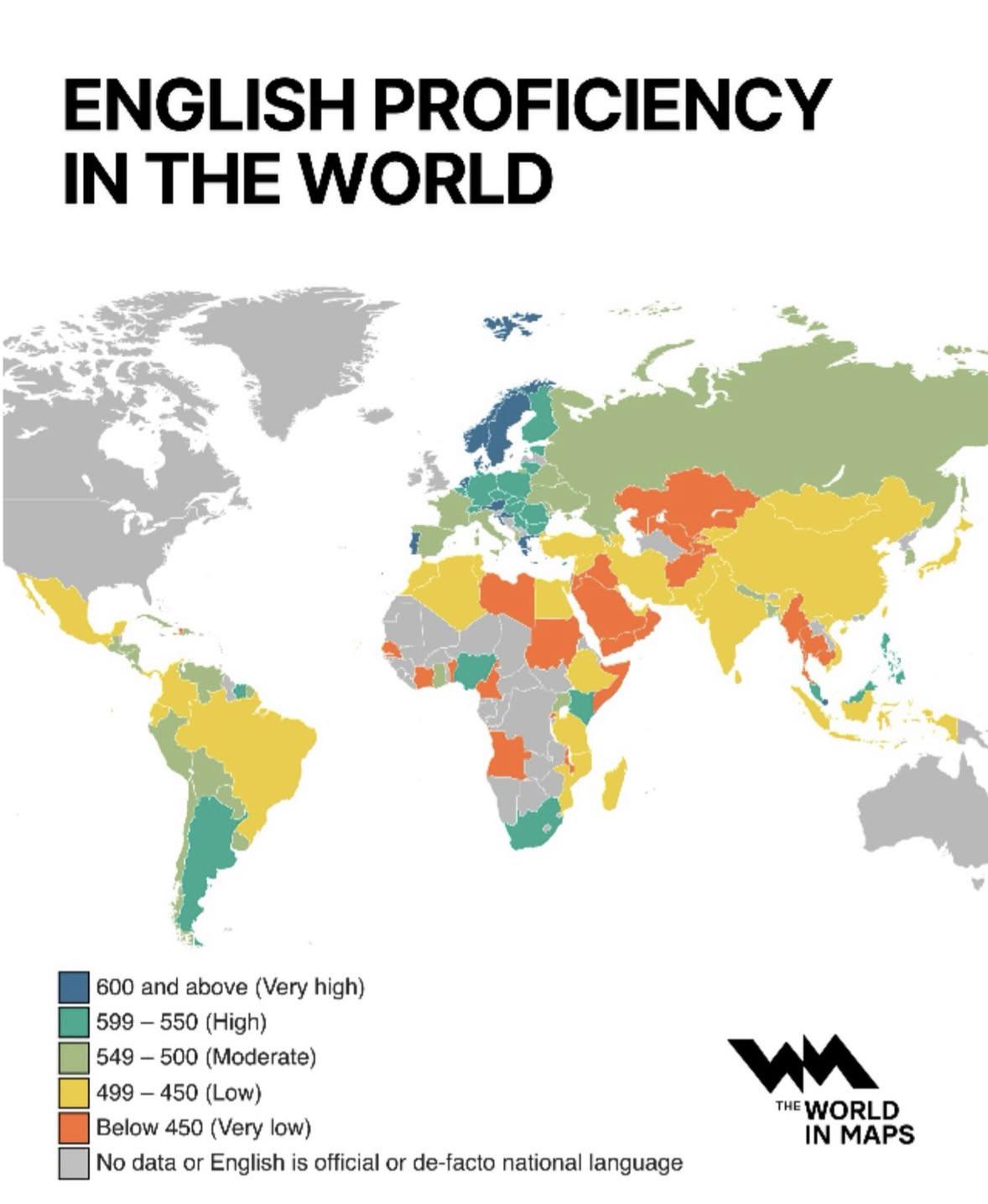English Proficiency in the World Map


David Chen
Data Visualization Specialist
David Chen is an expert in transforming complex geographic datasets into compelling visual narratives. He combines his background in computer science ...
Geographic Analysis
What This Map Shows
The "English Proficiency in the World Map" provides a clear visual representation of how well different countries and regions communicate in English. This map classifies nations based on their English proficiency, revealing a spectrum from very high to low proficiency levels. The countries are color-coded, allowing for an instant understanding of global trends in English language skills.
English has become a global lingua franca, playing a crucial role in international business, education, and diplomacy. Understanding the proficiency levels of various regions can help us grasp the significance of English in global communication and the cultural implications that arise from these language skills.
Deep Dive into English Proficiency
English proficiency is an essential metric in today’s interconnected world, shaping how nations engage in commerce, politics, and cultural exchange. The map highlights that countries like the Netherlands, Sweden, and Norway boast exceptionally high levels of English proficiency. In fact, according to the English Proficiency Index (EPI) published by Education First, these nations consistently rank among the top scorers, with proficiency levels often exceeding 70% of their populations.
Interestingly, the reasons for such high proficiency can be traced back to educational systems that prioritize English from an early age, as well as cultural factors such as media consumption and exposure to English-speaking environments.
On the other hand, countries with low English proficiency, such as Afghanistan and some regions in sub-Saharan Africa, often face significant challenges. Limited access to quality education, socio-economic factors, and cultural priorities can hinder the learning of English. For example, in many developing nations, the focus on local languages in the education system can sometimes overshadow the importance of English, which is deemed essential for global interaction.
The map also reveals a fascinating trend: regions with historical ties to English-speaking countries tend to have higher proficiency levels. For instance, many Caribbean nations, influenced by colonial history, exhibit moderate to high English skills among their populations. Conversely, countries in Asia, particularly in East Asia, show a mixed proficiency level due to varying educational policies. For instance, countries like Japan and South Korea have invested heavily in English education but still struggle with conversational fluency among their citizens.
Regional Analysis
Examining the map regionally provides intriguing insights into global English proficiency trends. In Europe, Scandinavian countries dominate the high proficiency spectrum, thanks to their comprehensive educational policies and cultural integration of English through media and entertainment. Interestingly, even among non-native speakers, the ability to communicate effectively in English has become a vital skill for employment and social mobility.
In Asia, the landscape is diverse. Countries like India and the Philippines have high English proficiency, largely due to their colonial past and the role of English in business and education. India, for example, has a significant number of English speakers, with estimates suggesting that over 125 million people can communicate in English to some degree. In contrast, nations like China and Japan, despite robust educational frameworks, still see gaps in conversational skills, highlighting the difference between academic learning and practical usage.
Africa presents a more complex picture. Countries such as Nigeria and Kenya have embraced English as an official language, resulting in a moderate level of proficiency. However, in other parts of the continent, local languages dominate, and English proficiency remains low. This language divide can influence economic opportunities and access to information, further entrenching social inequalities.
Significance and Impact
Understanding English proficiency on a global scale matters immensely in our modern world. As businesses expand internationally, the ability to communicate in English becomes not just a skill but a necessity. This trend is evident in job markets where English-speaking candidates often have a competitive advantage, regardless of their field.
Moreover, the rise of digital communication underscores the importance of English. Social media, international conferences, and global business transactions increasingly rely on English as a common language. As countries strive to improve their English proficiency, they are often investing in educational reforms and language programs, demonstrating a commitment to integrating into the global community.
Looking ahead, projections indicate that the demand for English language skills will continue to grow. As globalization persists, the ability to communicate in English will be a key factor in achieving economic growth and fostering international cooperation. Thus, the map not only reflects current proficiency levels but also serves as a barometer for future educational and economic trends around the world.
Visualization Details
- Published
- September 29, 2025
- Views
- 46
Comments
Loading comments...